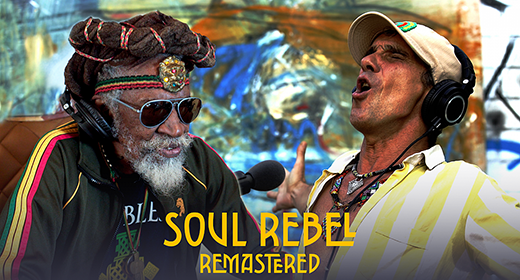by Chad Foreman: I have been teaching meditation for over ten years and practising and studying the various systems for more than fifteen years…

I understand the mechanism of various meditations, but I must admit when I was going through anger and depression issues the one meditation that saved me was meditating using a Mantra. It holds a special place for me because of that and I owe it this blog.
Mantra
So why is using a mantra so effective? put simply it’s because it employs the thinking mind instead of trying to ignore it, silence it or subdue it. It uses thoughts to transcend thoughts, which is an extremely skilful method. To give you the heads up about the technique, without going into the philosophy of enlightenment yet, it is simply repeating a mantra over and over in your head for a set period of time.
A mantra has different sacred and profound meaning in the Buddhist and Hindu spiritual traditions but here it is simply adopted as a phrase with no special significance to replace the incessant thinking of thoughts. You employ the mind by giving it something to do, namely keep thinking over and over again of the one phrase, this is something actually everyone is pretty good at doing naturally.
To go a bit deeper into why this simple method works so well you have to understand what creates emotional suffering, that is disturbing emotions like anger, jealousy, fear, anxiety and even depression – all these disturbing emotions are cause by thinking. Thoughts come with their own emotional charge that researchers have even discovered last about 90 seconds, (90 second secret here) the problem is we keep thinking over things reigniting the emotional charge until we become sick and weak drained of all our energy. As Eckhart Tolle so insightfully said:
“It is never the situation that cause suffering it is your thoughts about it.”
Or like the great 17th Century Zen Master Bankei when he said to a woman who asked him “…how do I stop all my suffering over my dead husband. Every time I think of him I get sad and depressed” the Zen Master simply replied “stop thinking about him.” This might strike you as callous, disrespectful or even repressing the emotion rather than ‘dealing with it’ but it has some profound and inconvenient truth to it. I was studying counselling therapy at the time when I read that passage and it just blew me away as incredibly easy, effective and a massive Zen slap in the face of modern psychological techniques that usually re-frame things, pour over past histories or actively challenge the legitimacy of thoughts, the Zen Master just exploded all of that non-sense with one decisive ‘just stop it.’
Of course that is easier said than done. To just stop it, to just drop the last thought and focus on the present moment as it is, is a key skill in meditation especially the practice of mindfulness. But I found in desperate times I was constantly going over my problems and worries and thinking of people that pissed me off or thinking about tragic world events, my meditations just seem to fail me. This is where Mantra really helped me in these times of crisis and I think it can help anyone who practises it too. Buddha taught this simple technique 2,500 years ago and it is still powerful today. As Buddha taught I now include teaching all beginners to repeat the mantra breathing in and breathing out in co-unison with their breath as an aid to focus, relaxation and transcending mundane thoughts. You can try the technique here with my guided meditation.
As I have discovered in long meditation retreats you can get rid of the surface thoughts but then there is an undercurrent of quiet thoughts that are always going on just under the surface of normal thinking, keeping the emotional charges of disturbing emotions alive. So this is where repeatedly thinking a mantra has the power to drown out both the surface noise and eventually even the quieter undercurrent of thoughts until all that is left is the repetition of a neutral mantra and the serene state of natural awareness which starts to emerge naturally.
There is the opposite effect which positive affirmations take advantage of, by repeating empowering and ‘feel good’ statements over and over. They make you feel good, and there’s nothing wrong with that at all, it’s just not a method that takes you all the way to the clear heart of yourself. Just like ruminating on worries causes a negative disturbing charge through your body thinking of positive thoughts creates a pleasant and positive energy through your body.
Like I said there is nothing wrong with wanting to feel empowered or brave or abundant but these are artificially created feelings they are not naturally emanating from your true self; they are mind created, temporary and just like recreational drugs you need ever increasing doses to maintain the initial high of good feelings. To be quite blunt you end up delusional – always trying to think positively to get your fix of good feelings, but that’s a story for another blog.
Our natural state of awareness unsullied by the thinking mind is naturally clear and peaceful, dare I say happy. It is not that radical an idea, except that it does challenge the classic Descartes’ idea of “I think therefore I am” – now, a more accurate rephrasing of that would be: I think therefore I get stressed. It also challenges the self development movement because I think the scientific research proving the effectiveness of meditation point to what mystics have been saying for thousands of years: namely we are already the peace and happiness we are searching for. If we can still our minds and look within we can find what’s always been there. Happiness is more of a discovery than a creation.
The ‘I am’ as some Eastern teachers call it is the ground of our being the clear existential awareness which exists in every moment. It is obscured but never lost by what Robert Anton Wilson calls the reality tunnel. Which is simply the thoughts, ideas and beliefs that prejudice and colour the alive clarity of the present moment.
A great Zen Koan points to this original mind before mental interpretation or before obscuration by a reality tunnel by asking ‘who are you before you’re named?’ In other words there is existence before thoughts, that’s not only the heart of the matter, but finding it is exactly the purpose of life and the ultimate pursuit. This is the perennial philosophy elucidated by Aldous Huxley.
“Repeating a mantra helps to transcend all mental activity and experiences the ‘source of thought’, which is said to be pure silence, ‘pure awareness’ or ‘transcendental Being’, ‘the ultimate reality of life.”
Accessing this enlightened clear presence behind all thoughts is the purpose of repeating the Mantra. Actually one teacher has proclaimed it is the goal of all meditation techniques. Repeating the mantra is just one method to get you there or get you beyond thinking.
Importantly repeating the mantra does not just stop worrying about problems but it also suspends such ingrained subtle beliefs as personal identity and cultural narratives so you can experience a moment without these labels.
Once you have repeated the mantra long enough to stop all other compulsive and subtle thinking you can slowly let the mantra quieten down to a whisper in your mind until it finally stops all together. You can start the mantra again if thoughts intrude on your silence but eventually you can quieten all thinking long enough so all that’s left is the peaceful and joyful emptiness of awareness. This is not dull or passive but instead alive with creative potential, sensitivity to others and a deep primordial wisdom which is as old as the universe itself.
The key is that when thoughts and planning inevitably arise again you can keep contact with the enormity of silence that is always and forever in the transcendent background.









































